Textiles and the Triplett Sisters
BAQ's: Borders
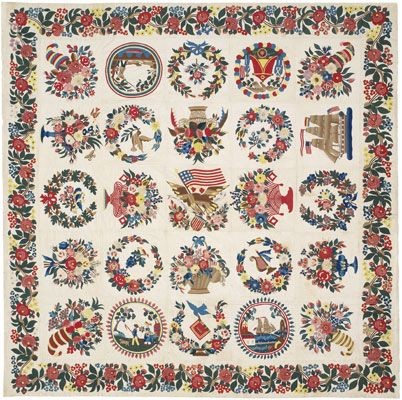
Although we are still gathering photos for our Pinterest page to help us learn more about the Baltimore Album Quilts, it has become apparent that there are quilts with matching borders. In fact, I’ve identified five groups with five or more quilts in the group. Several of the borders are very distinctive, complicated borders that would be difficult and require a lot of time to do one side, let alone four sides. Is this a sign of a professional quilter, a workshop, a church group of ladies working together or simply a pattern being replicated? Does it mean the professional quilter made the whole quilt, or just added borders to a friendship quilt made at a quilting frolic?
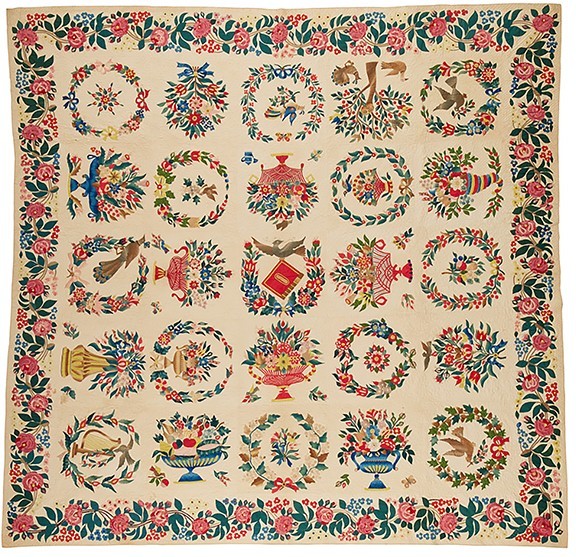
The rose border, (which has sometimes been credited to Mary Evans because of the style of rose) matches a rose in the block her nephew owned. (Here is a link to the article about her work.) Compare these 5 quilt borders: 1) The John and Rebecca Chamberlain quilt has been described as exquisite and some of the best work seen, 2) Rough and Ready BAQ at the St. Louis Art Museum, 3) a quilt sold by Jan Whitlock, and 4) a BAQ quilt in the Poos Collection published in the book Hidden Treasures. This group also has one quilt with only one of the more difficult borders and three other borders in a different style. (Here is a link to see the five quilts together.)
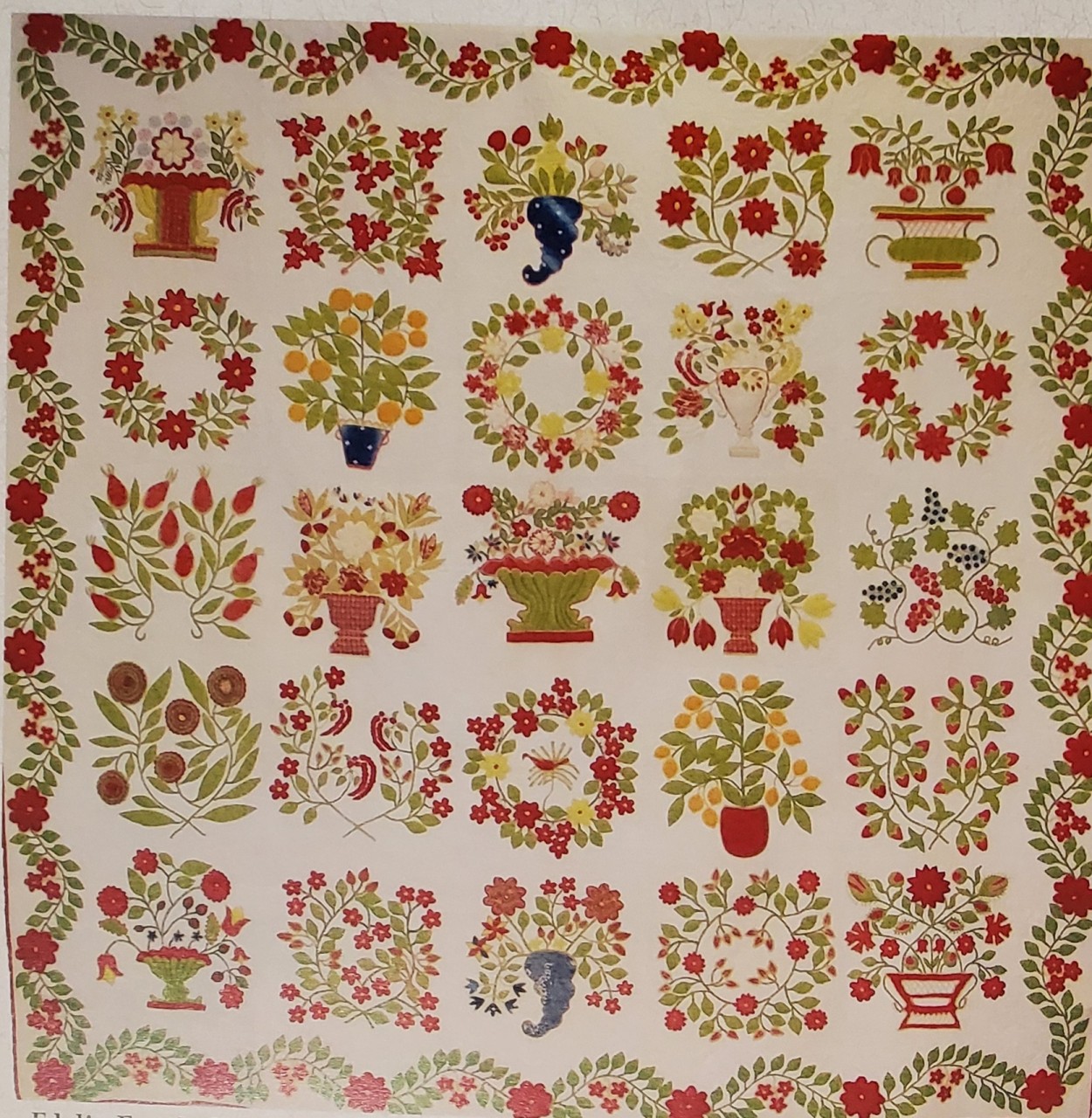
Mrs. Henry Richmond was documented as having more than one quilting frolic. One of her quilts has no border, but the other quilt made for her has a border which matches the Sister BAQ 1850, Baltimore Album Quilt Top from MIA 1844-45, Georgianna Eltonhead, 1847 quilt and the Edelin Family Quilt. (Here is a link to see the five quilts together.)
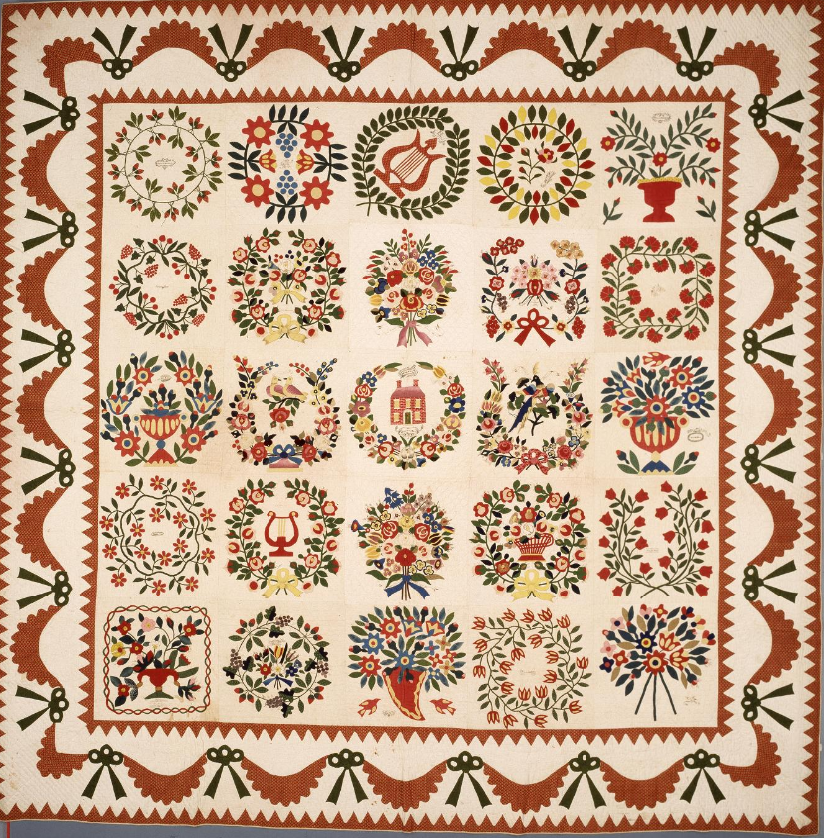
The swag and bow borders are found in a surprising number of quilts: seven. Dunton documented the border first in the Kitturah Butler 1850 quilt. Additional quilts using the border are Cottin, Gray, Stewart, Skinner Auction, Tolston, and a much later quilt from 1873. (Here is a link to see the seven quilts together.)
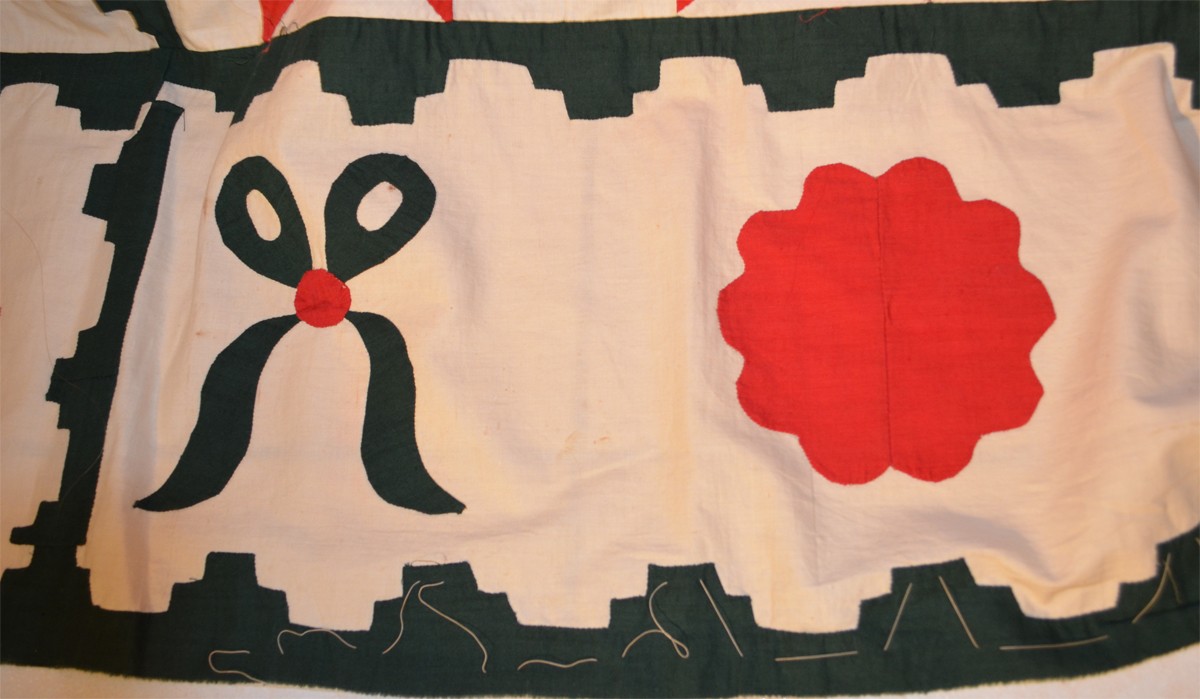
Two other frequently seen borders are the sawtooth frame and the stairstep border. These borders appear on quilts other than BAQ’s so it might not be as diagnostic for tracking purposes. I’m continuing to collect data and add more quilts to the border grouping to see if I can get an answer to some of my questions. If you are aware of a quilt that belongs in one of the border groups that I don’t have, please email me at Lori@quiltandtextilecollections.com

